There are many varieties of foundations. If during the construction of residential buildings it is necessary ...
|
|
Any house built, garage, cottage or bath need insulation ... |
The roof is the most important structural element of the building. From how high quality ... |
Device and types of greenhouses
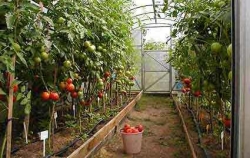
The long -awaited summer came, and many citizens hurry to summer cottages, gardens and sites to engage in growing vegetables, herbs and fruit crops. They often equip a greenhouse and greenhouse near a country house, which have a lot of advantages. In addition, our weather is not constant do not allow you to get a good harvest of many vegetable crops. In the film greenhouse, climatic conditions will be created, which are present south of 400-600 kilometers, and in a heated greenhouse by about 1000 kilometers or more.
Table of contents:
- The purpose of the greenhouse
- The device of the greenhouse
- Cooking a greenhouse from autumn
- What are the greenhouses
- Preparation of the greenhouse for winter
The purpose of the greenhouse
Greenhouses are widely used today to grow seedlings, heat -loving berry and vegetable crops. In the greenhouse, unlike other buildings of protected soil, a certain microclimate is supported. Along with this, there are relatively small fluctuations in temperature and humidity during the day.
Favorable conditions can be recreated with the proper organization of ventilation and heating. If you view the construction projects of greenhouses, you can understand that they practice solar, technical (due to electricity, hot water and steam) and biological (due to the heat of biofuel). Ventilation can be done forced or natural (through transums or windows).
The main purpose of greenhouses is to obtain seedlings for open and closed soil, as well as in the production of fresh vegetables. In greenhouses, tunnels and greenhouses, hybrids of pepper, cucumbers and tomatoes are grown. Greenhouse varieties and self -fertile hybrids are able to endure reduced illumination, and the yield in the greenhouse is an order of magnitude than in open ground, and the presentation and quality are better.
The device of the greenhouse
Before you make a greenhouse, you need to consider its device. The design of the greenhouse can be viewed in the pictures of our site. The frame can be made from wooden rails or metal profile. The coating is glass, window frames, plastic film, and in the most ideal - polycarbonate. The greenhouse base can be built from logs, which have a diameter of at least 18 22 centimeters to protect the culture from the influence of low temperature.
The logs can be replaced with monolithic concrete or brick masonry with a thickness of 2030 centimeters. Metal or asbestos soil pipes are covered with clay, the layer thickness of which should be about 20 centimeters, and about 2025 centimeters are placed on top. Instead of such pipes, stripes of wavy or sheet asbestosifier can be used 2530 centimeters wide, which are folded in the form of a hut.
Greenhouse crops are usually grown on racks or directly in the ground. The ridges in the greenhouse are better to make bulk (up to 45 high and a width of 100 125 centimeters). In areas with a deep occurrence of soil water or sandy soil, you can not pour the beds, but make the passage between them in deepened by 4050 centimeters. Around the greenhouse in this case, it is necessary to dig out sewage grooves for storm and meltwater.
Cooking a greenhouse from autumn
A greenhouse or greenhouse can be done independently, or you can buy a factory version. In any case, the design will maintain a microclimate inside, favorable for plant development. It is more convenient to buy or make a greenhouse in the fall, and soon you will understand why.
Installation of a greenhouse, first of all, is more profitable from an economic point of view. The cost of frames for sellers and manufacturers is lower in the autumn by 10-15%. In addition, in recent years in the spring there has been a rise in the cost of polycarbonate. Most summer residents have a do -it -yourself greenhouse for long May holidays, which creates a stir that complicates the purchase process.
In addition to financial benefits, it will be possible to start the spring season of landings earlier, which will only benefit the crop. Even with freezing, the temperature of the soil surface inside the greenhouse is about zero, and therefore you can start planting seedlings in the middle lane in the month of March.
An early purchase of material will save you from many inconvenience. For example, in the spring season, some difficulties may arise with the delivery to the country section of the greenhouse: roads in garden partnerships in most cases are soil and only after the snow comes down and passes the danger of floods, they become suitable for transporting goods. In addition, earthworks are difficult to carry out in early spring due to frozen soil.
What are the greenhouses
Using greenhouses, you can grow different plants in the most favorable conditions for them, which, by the way, can be controlled. Farmers and gardeners are building greenhouses of various types, which allow harvesting several times a year. The choice of the type of greenhouses for the most part is determined by the goals for which they are set.
Warm greenhouse
Such greenhouses are used mainly for plants that grow in their homeland in a tropical climate or are known with exotics, such as, for example, orchids. The temperature in this design is maintained at 18 degrees Celsius. In parallel for crops, a suitable humid environment is created. Support in such houses for plants of the proper temperature is possible through the use of infrared lamps.
Half -haired greenhouse
In this option, the temperature will be maintained within 10-13 degrees, which acts as the most optimal regime for flowers, vegetables and fruits that grow in conditions of warm climate. Among the main advantages of such a greenhouse are highlighted that it allows the corresponding plants to grow even in winter. To do this, install infrared lamps with which heating will be carried out.
Cold greenhouse
The temperature in such a greenhouse is maintained at 4-7 degrees Celsius. This version of greenhouses is suitable for growing and hardening seedlings. You can also grow plants that grow in a cold climate greens, beets and peas.
Adjacent greenhouse
The main one for this type of greenhouse is lighting, heating, ventilation and materials on the basis of which a greenhouse is made. The listed parameters can vary depending on the capabilities that are determined by the budget, and on the presence of free space on the site.
Sometimes the harmony of a combination of a greenhouse with a landscape should be taken into account. The installation of an adjacent greenhouse is carried out close to the outer wall of a residential building. The first wall of the greenhouse is directly the wall of the house, other walls are installed by the ordinary method. The entrance to the greenhouse is not made from the house, for this, the door is made in the outer wall of the greenhouse.
A separate greenhouse
Such a greenhouse is a structure of an independent nature. A greenhouse of Lenka is made, which is previously fixed on the frame, or from glass. There are ready -made sets on sale that are designed to create such a greenhouse. Their cost is determined by size, material for the construction of greenhouses and additional equipment.
Frame greenhouses
Related and separate greenhouse greenhouses are erected with the arrangement of a concrete foundation. An alternative to this option can be a frame greenhouse, the elements of the frame of which are fixed in the soil itself. The frames for them, as a rule, are made of plastic, and the arches are installed in arched or triangular form. Such a simple design provides an opportunity to create a greenhouse effect. You can periodically open both ends of the greenhouse to create the optimal mode for plants.
Preparation of the greenhouse for winter
You already know how to make a mini greenhouse and a greenhouse, now let's talk about the care of the greenhouse. When winter is not far off, a rich harvest has long been harvested, and banks with pickles are placed on the shelves, it's time to take care of the greenhouse. Simple tips will help to avoid surprises and troubles in winter, as well as facilitate work in the spring. Remove all the plant residues from the Earth and remove 5-7 centimeters of soil, where harmful insects live. Dice, as it should, deliver humus, peat, manure, ash, sand and cover with straw.
In winter, you just need to throw snow into the greenhouse, which will protect the earth from freezing, and in the early spring will be nourished the land with moisture. Until crackling frosts have begun, carefully clean the greenhouse from the ground, dust and dried dirt. It is necessary to lubricate or tint only the non -rounded fittings of the frame - the door handles and the valves. Unsparaited greenhouses require more attention to themselves, which need special processing and painting, which prevent corrosion.
A mandatory way to keep the greenhouse intact under the snow is strength. No matter how much the manufacturers of greenhouses would like, but today, unfortunately, there are no models that can withstand unpredictable winters without additional strengthening.
Abundant snowfalls and snow loads for greenhouses are not rarely exceeded the permissible norm, the maximum of which is considered a 200 kilogram per meter cubic. To protect the greenhouse from snow, it is necessary to strengthen it with internal supports, based on the calculation of 3-4 supports for a building with a length of 6 meters. The number of supports can be made more if the greenhouse is located where there is a danger of snow caps in a leeward place or near the fence.
In order not to fall in the ground and plunge into the ground, it is worth using a little cunning to fix the support on the upper crossbar of the greenhouse and put something solid under it. So that the greenhouse can resist the surprises of winter, do not allow maximum snow loads, for this it is worth regularly cleaning it from snow. Try to snow or ice not scrape off the outside with firm objects, because you can damage polycarbonate by reducing ultraviolet protection and light permeability.
Now you are familiar with why you should use a greenhouse on your land plot, and how to make a home -made greenhouse. Subject to simple recommendations that relate to the care of the greenhouse in winter and preparation for construction in the fall, your greenhouse will delight you for a long time and give a lot of pleasant moments when looking at a truly rich harvest. In addition, our classification of the types of greenhouses will help you decide which type of greenhouse to choose for your personal economy.

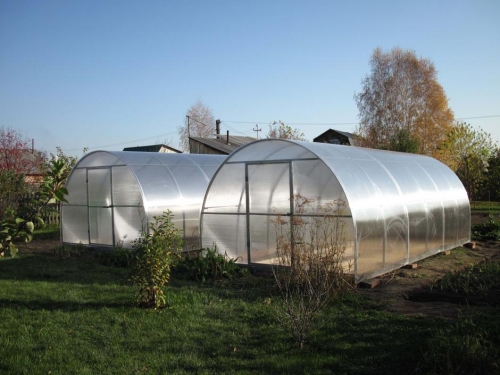
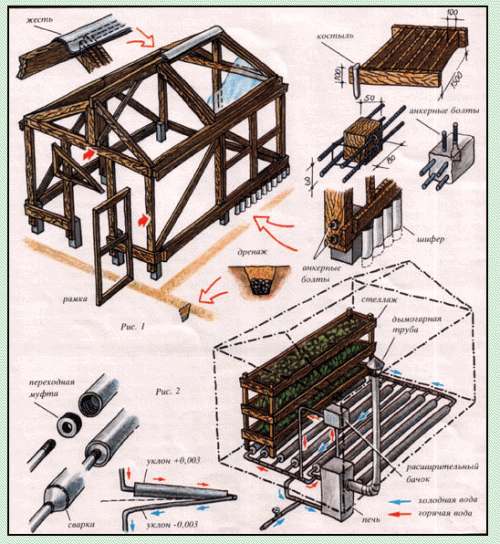
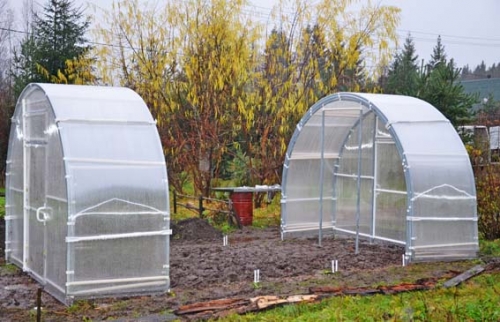
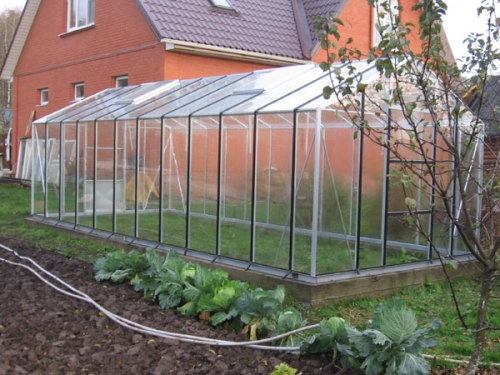
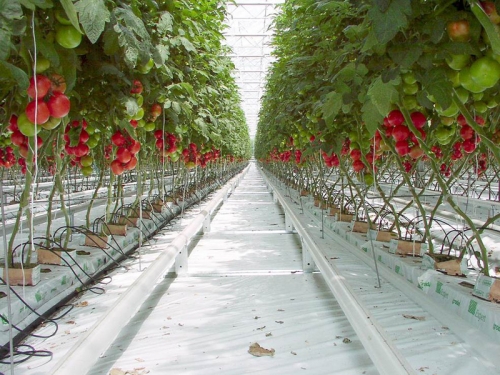

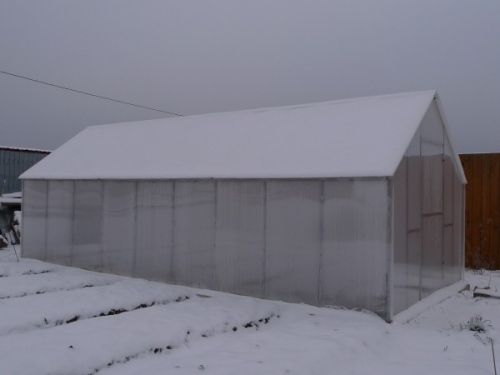
cool
cool